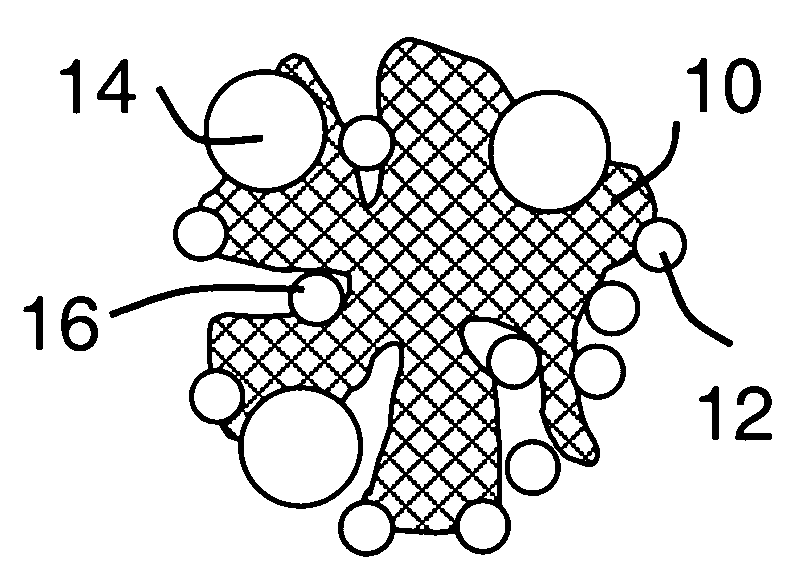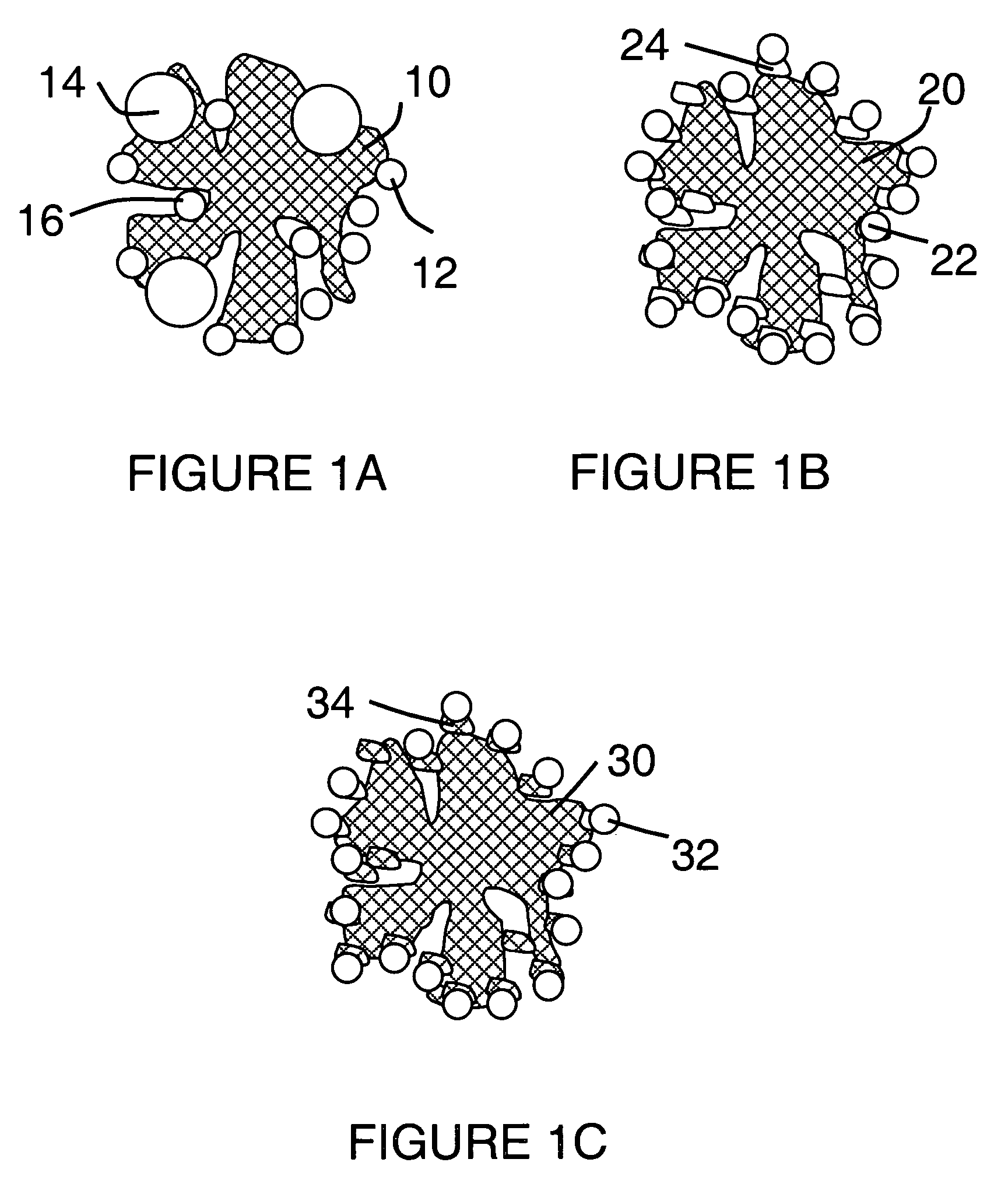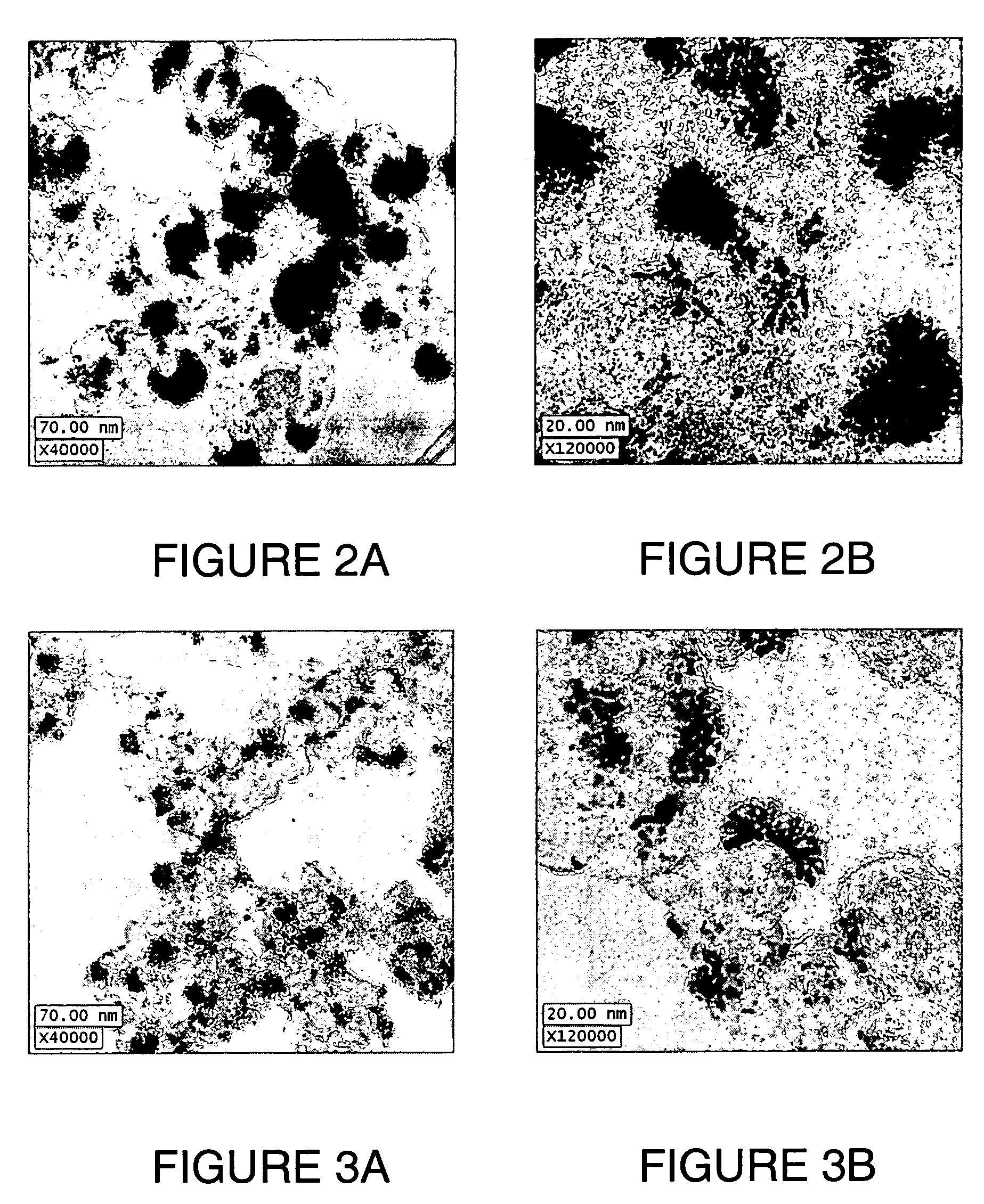Photocatalytic methods for preparation of electrocatalyst materials
- Summary
- Abstract
- Description
- Claims
- Application Information
AI Technical Summary
Benefits of technology
Problems solved by technology
Method used
Image
Examples
example 1
Deposition of SnOEP on Carbon Black
[0061] Unlike chemical and photochemical reductions, a single photocatalyst can repeatedly reduce many metal cations to metal atoms, which can be deposited in the vicinity of the photocatalyst to form nanostructures. Hence, to grow platinum nanoparticles well dispersed on carbon black using an in-situ photocatalytic method, the first issue is how to evenly locate the photocatalyst molecules (in this example SnOEP, Sn(IV) octaethylporphyrin dichloride) on carbon black.
[0062] The carbon black used was hydrophobic and was difficult to suspend in water even after 5 minutes of mild sonication. However, the carbon black was readily suspended in chloroform. Given that SnOEP is also hydrophobic and can be readily dissolved in chloroform, the carbon black and SnOEP were both dissolved in chloroform, and then the solvent was slowly evaporated, making the dissolved SnOEP molecules deposit on the carbon black.
[0063] Using this evaporation method, SnOEP was ...
example 2
Growing Pt Particles on Carbon Black
[0064] The photocatalytic method has been used to control the size and uniformity of platinum nanoparticles grown on surfactants, using ascorbic acid to reduce a platinum complex under tungsten light irradiation. In this example, platinum nanostructures were grown on carbon black, with size and uniformity control using the photocatalytic method.
[0065] Eighty minutes illumination of a stirred aqueous mixture (20 mL) containing SnOEP (0.4 mg) deposited on carbon black (10 mg) (prepared by the evaporation method), platinum complex (10 mM) and ascorbic acid (75 mM) led to a black slurry. When stirring was discontinued, a black precipitate settled to the bottom of the reaction vessel, and the supernatant was colorless and transparent. This suggests that the reaction is complete since the original color of the Pt complex is yellow. The colorless supernatant also indicates that most of the nanostructured Pt is associated with the carbon black.
[0066]FI...
example 3
Effect of Titration Method on Pt Particle Formation
[0071] A two-step titration of platinum complex led to the size reduction of Pt particles on carbon black. To reduce the average size, the platinum complex stock solution, which can provide a 45 wt % Pt loading on carbon, was reduced on carbon black by two-step addition of the Pt complex to the reaction vessel. 10.2 mg of CB, 1.1 mL of 20 mM K2PtCl4 and 8.9 mL of water were added to a 25-mL glass vial and sonicated for five minutes. 10 mL of 0.15 M AA was then added and the reaction mixture was illuminated for 30 minutes under stirring. The obtained black slurry was then centrifuged and the supernatant was removed. The black precipitates were washed five times, each time with 20 mL of Nanopure water. The cleaned precipitate was dried in oven at 65° C. overnight. The powder was then added to a clean glass vial. 1.1 mL of 20 mM K2PtCl4 and 8.9 mL of water was added and the mixture was sonicated for 5 minutes. 10 mL of 0.15 M AA was a...
PUM
| Property | Measurement | Unit |
|---|---|---|
| median diameter | aaaaa | aaaaa |
| median diameter | aaaaa | aaaaa |
| median diameter | aaaaa | aaaaa |
Abstract
Description
Claims
Application Information
 Login to View More
Login to View More - R&D
- Intellectual Property
- Life Sciences
- Materials
- Tech Scout
- Unparalleled Data Quality
- Higher Quality Content
- 60% Fewer Hallucinations
Browse by: Latest US Patents, China's latest patents, Technical Efficacy Thesaurus, Application Domain, Technology Topic, Popular Technical Reports.
© 2025 PatSnap. All rights reserved.Legal|Privacy policy|Modern Slavery Act Transparency Statement|Sitemap|About US| Contact US: help@patsnap.com



